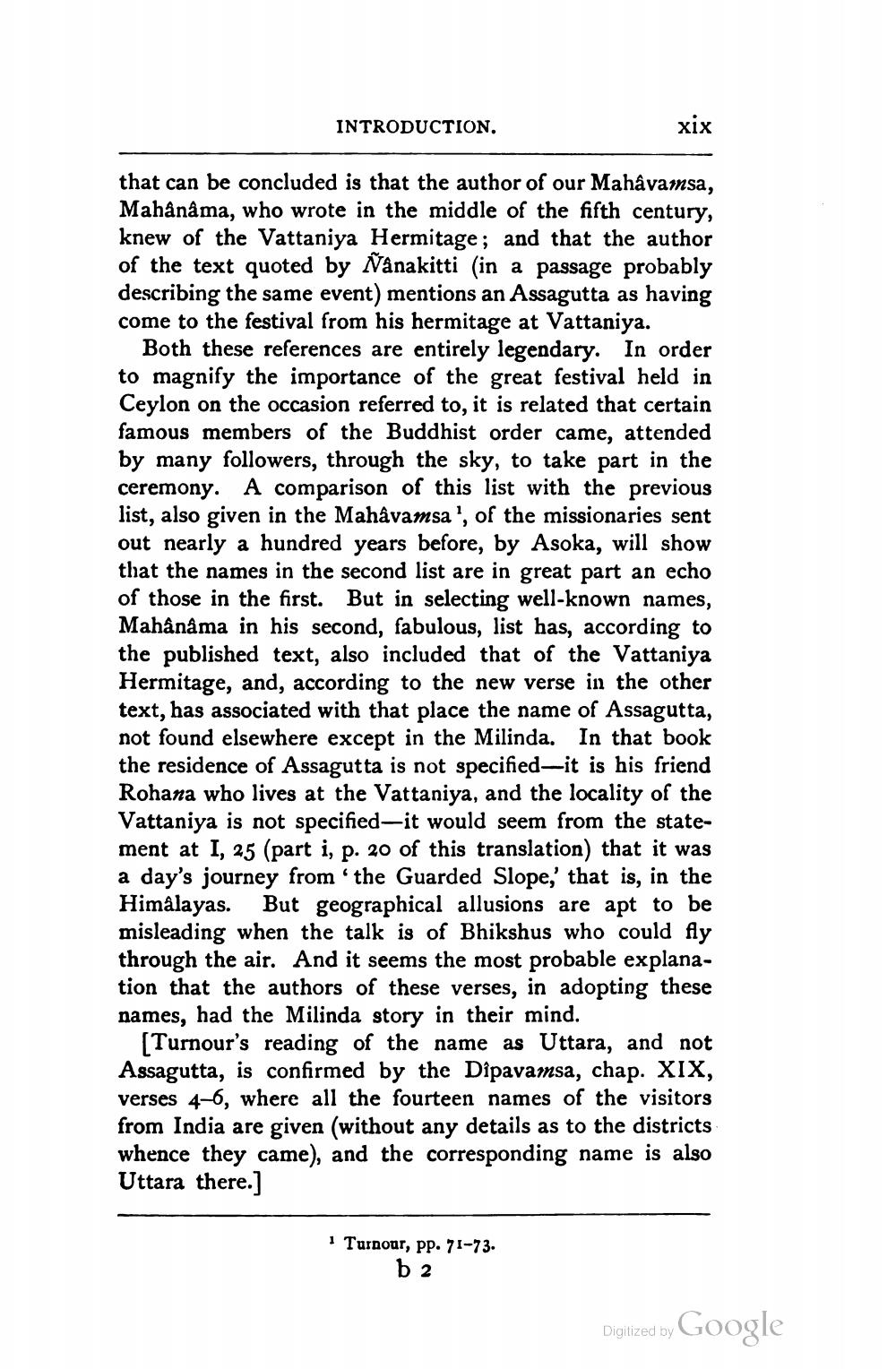________________
INTRODUCTION.
xix
that can be concluded is that the author of our Mahâvamsa, Mahânâma, who wrote in the middle of the fifth century, knew of the Vattaniya Hermitage; and that the author of the text quoted by Ñânakitti (in a passage probably describing the same event) mentions an Assagutta as having come to the festival from his hermitage at Vattaniya.
Both these references are entirely legendary. In order to magnify the importance of the great festival held in Ceylon on the occasion referred to, it is related that certain famous members of the Buddhist order came, attended by many followers, through the sky, to take part in the ceremony. A comparison of this list with the previous list, also given in the Mahâvamsa', of the missionaries sent out nearly a hundred years before, by Asoka, will show that the names in the second list are in great part an echo of those in the first. But in selecting well-known names, Mahânâma in his second, fabulous, list has, according to the published text, also included that of the Vattaniya Hermitage, and, according to the new verse in the other text, has associated with that place the name of Assagutta, not found elsewhere except in the Milinda. In that book the residence of Assagutta is not specified-it is his friend Rohana who lives at the Vattaniya, and the locality of the Vattaniya is not specified-it would seem from the statement at I, 25 (part i, p. 20 of this translation) that it was a day's journey from the Guarded Slope,' that is, in the Himalayas. But geographical allusions are apt to be misleading when the talk is of Bhikshus who could fly through the air. And it seems the most probable explanation that the authors of these verses, in adopting these names, had the Milinda story in their mind.
[Turnour's reading of the name as Uttara, and not Assagutta, is confirmed by the Dipavamsa, chap. XIX, verses 4-6, where all the fourteen names of the visitors from India are given (without any details as to the districts whence they came), and the corresponding name is also Uttara there.]
1 Turnour, pp. 71-73. b 2
Google
Digitized by




